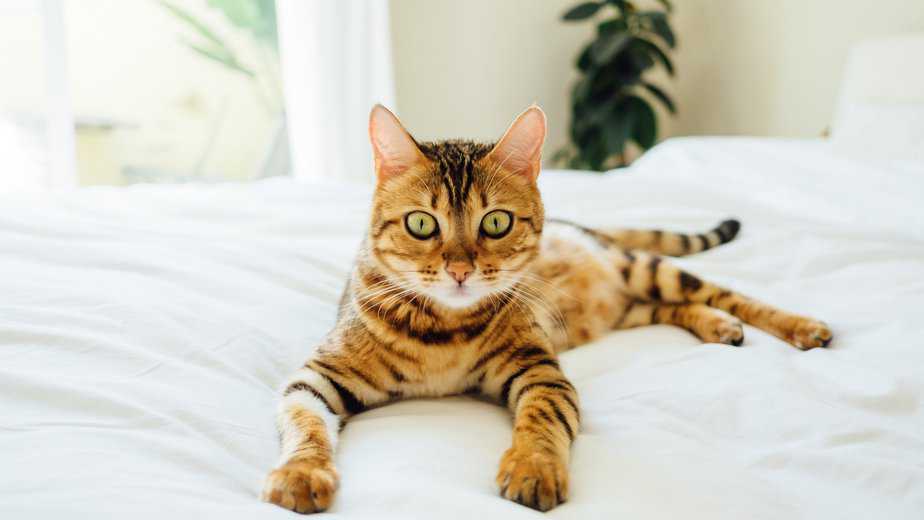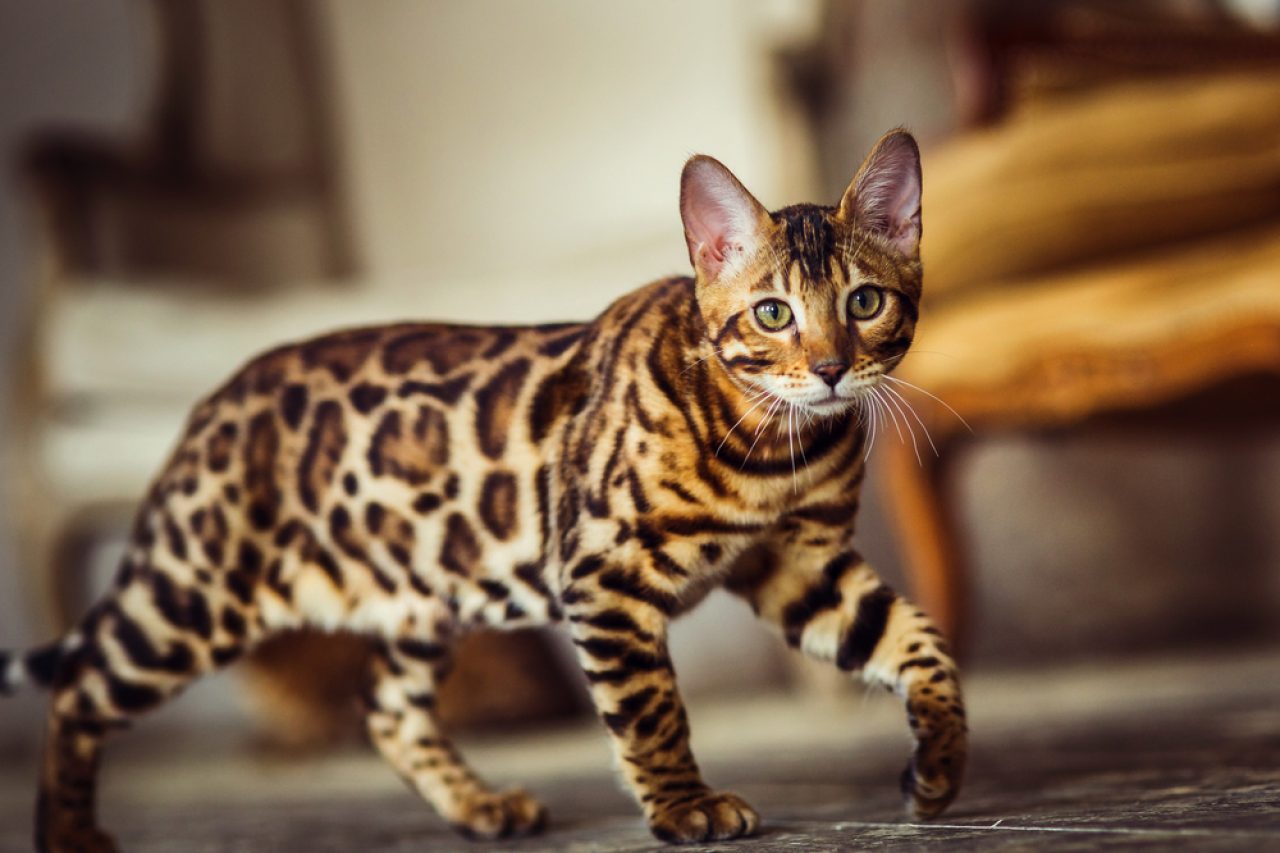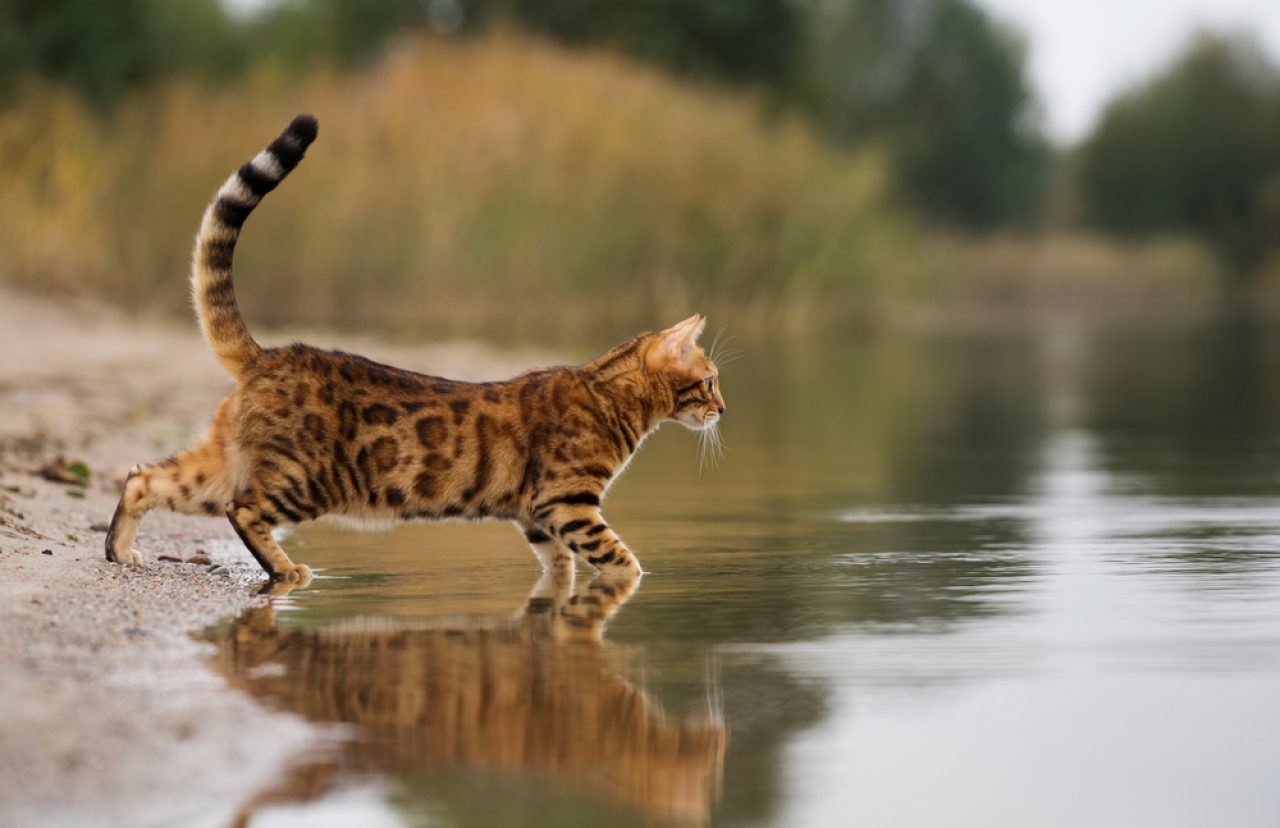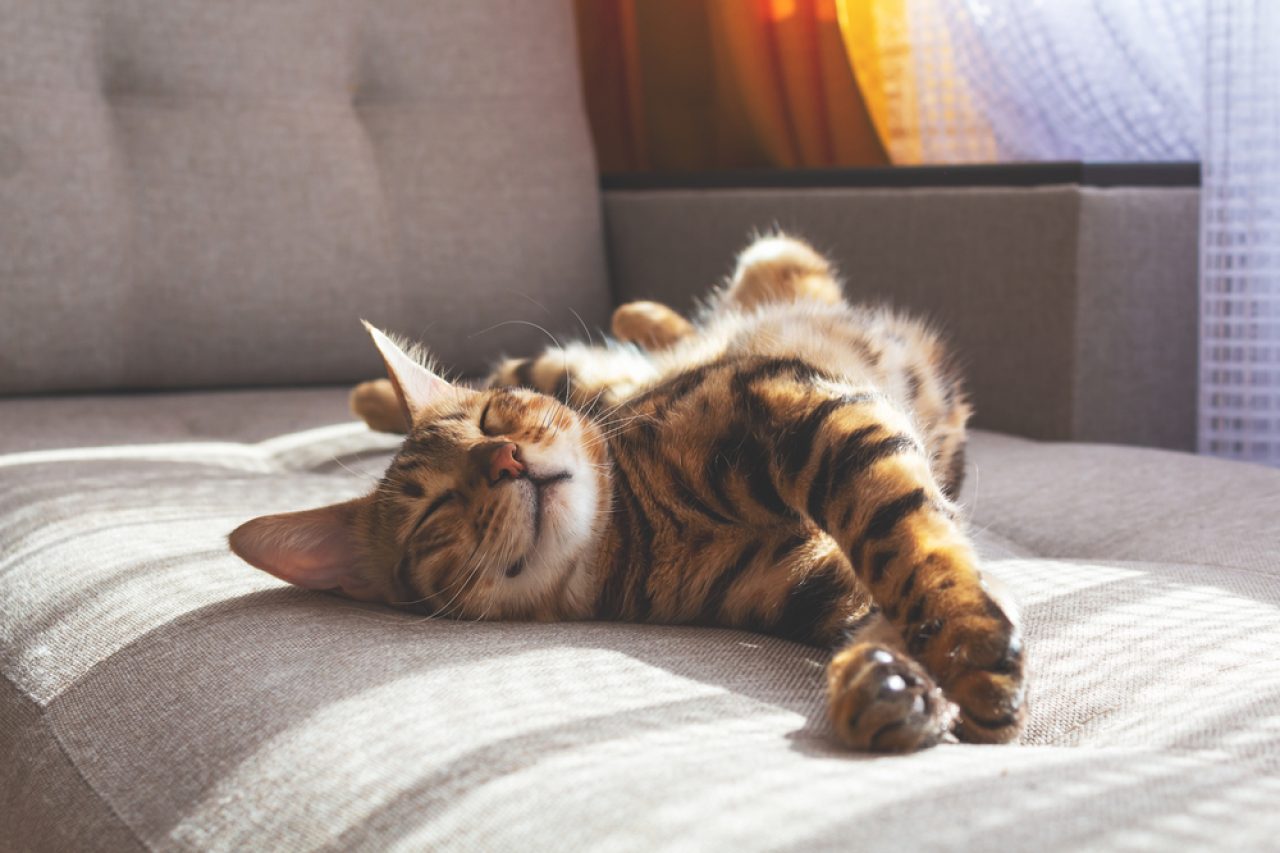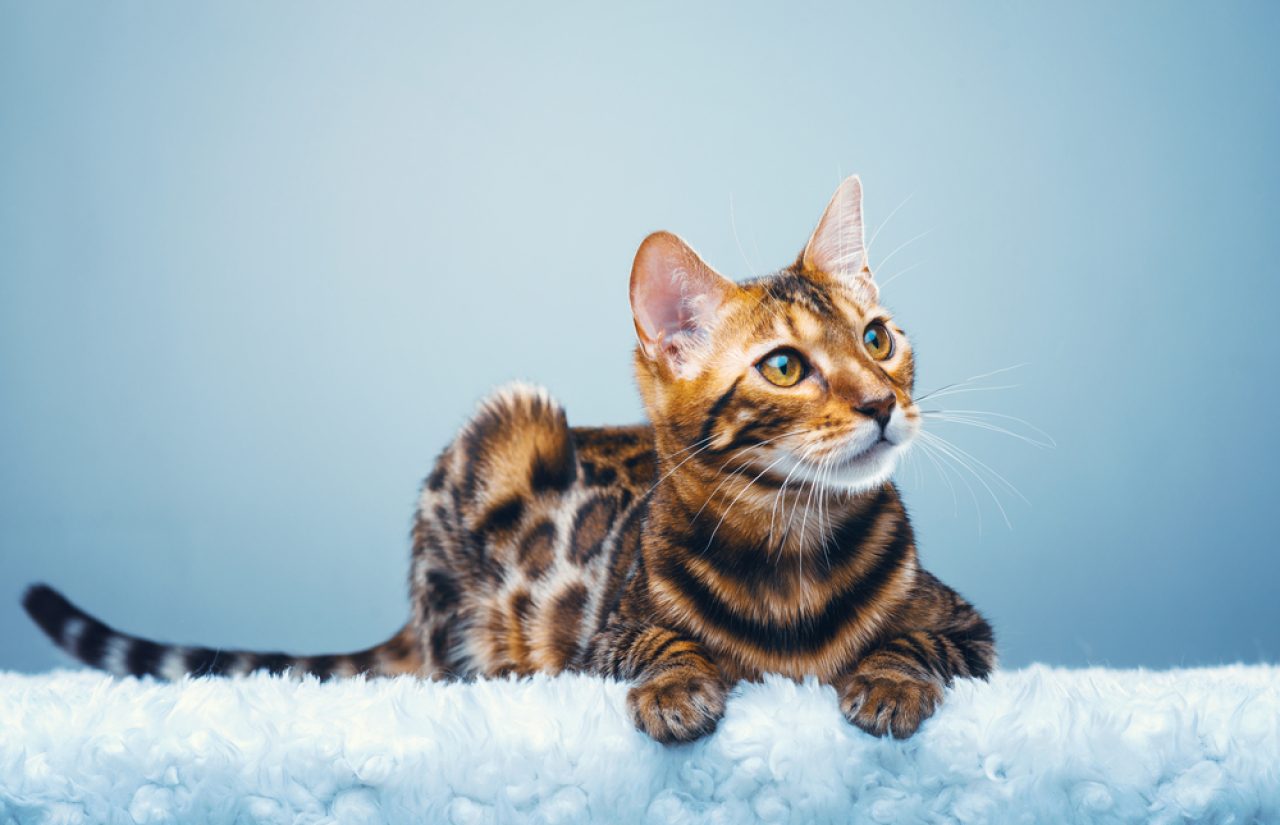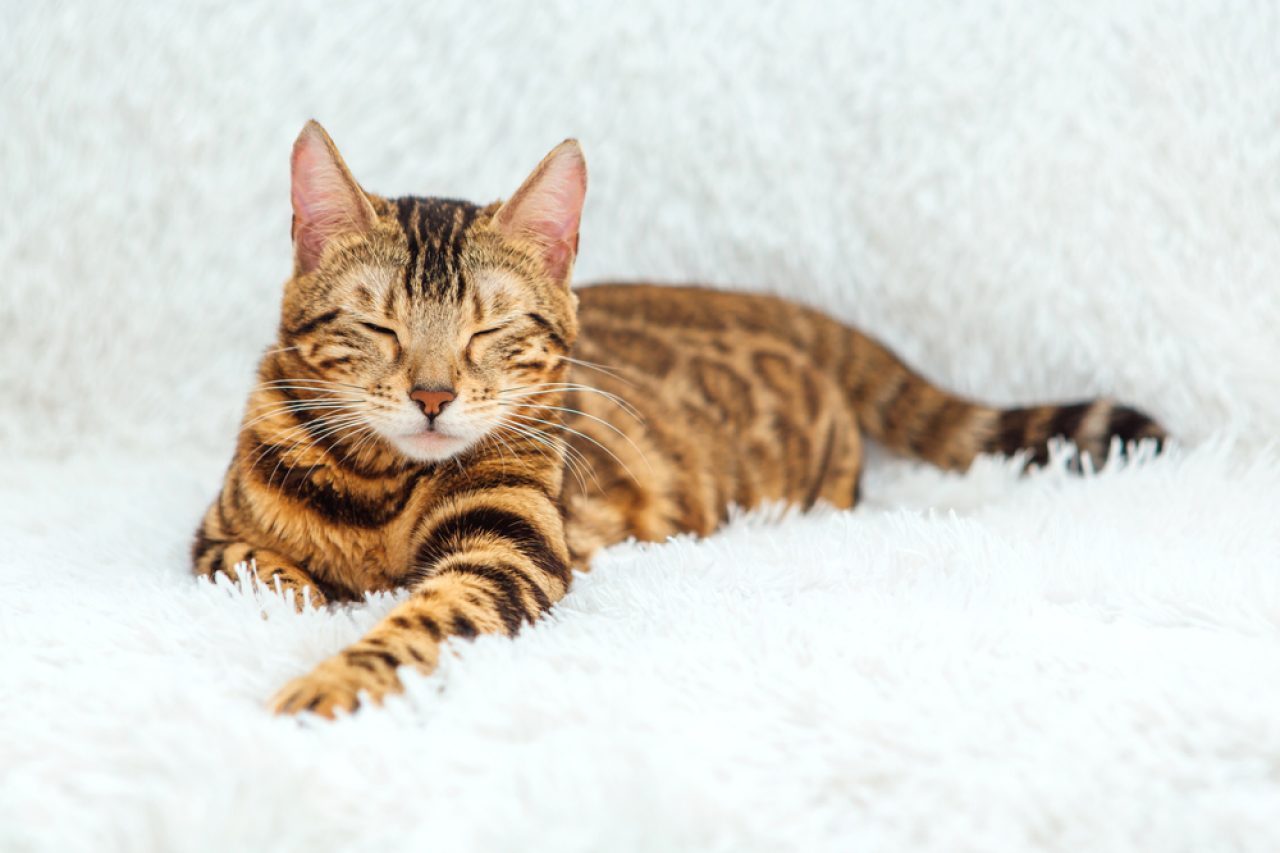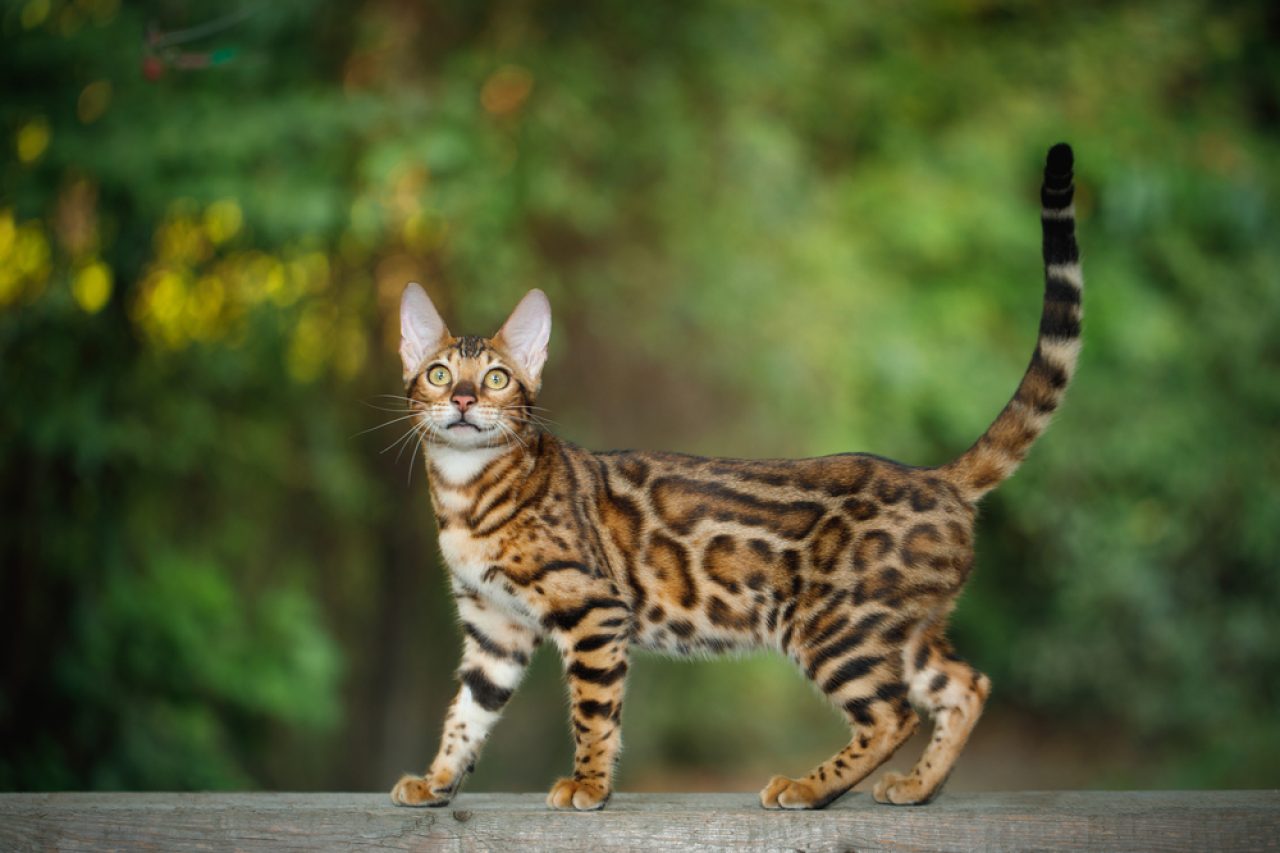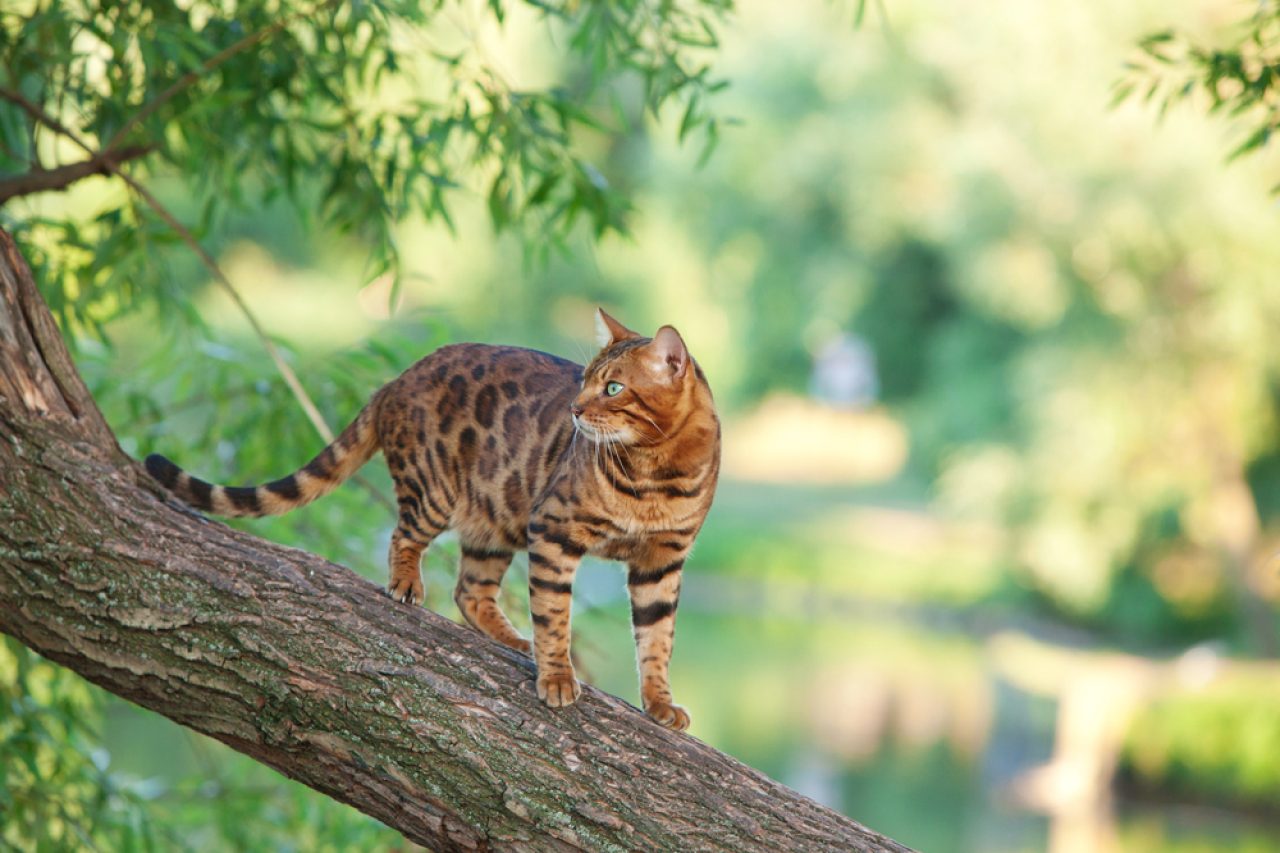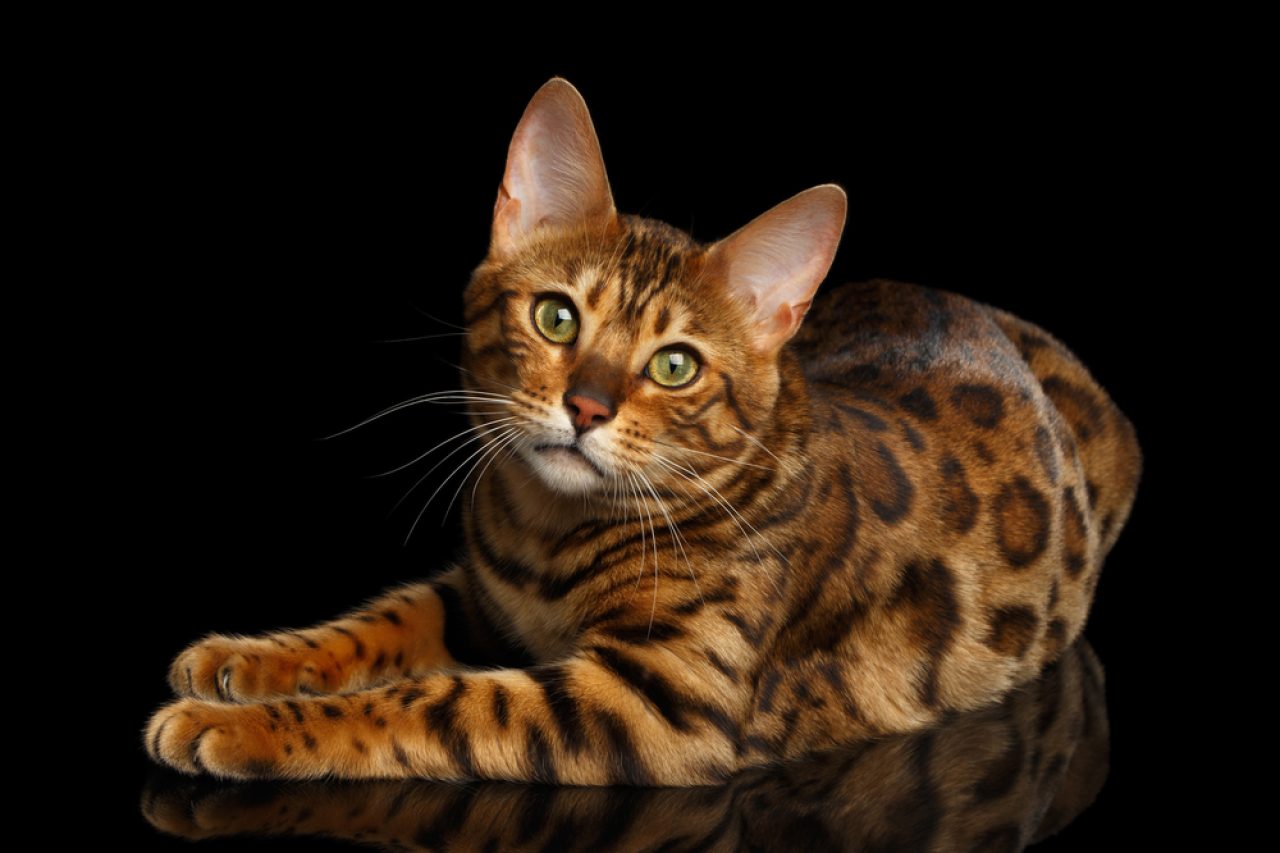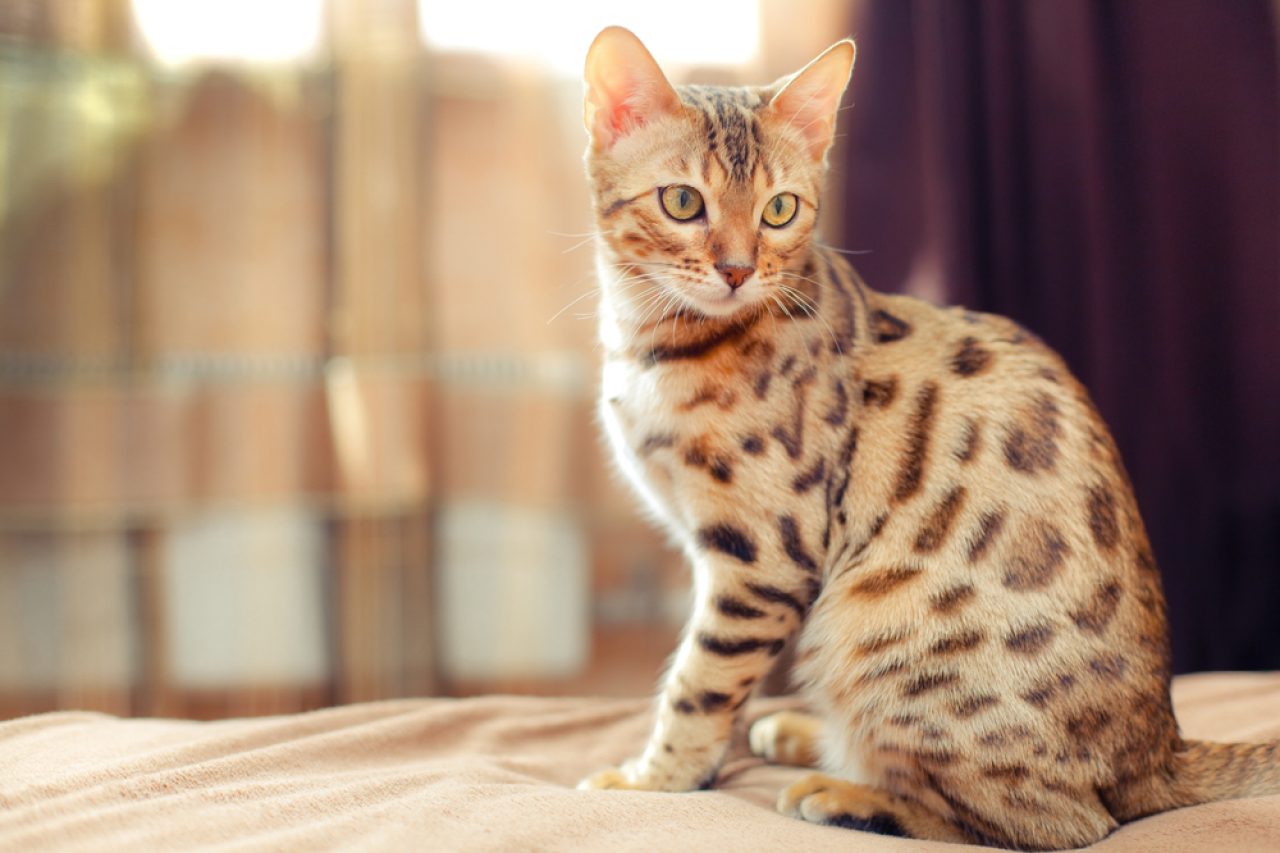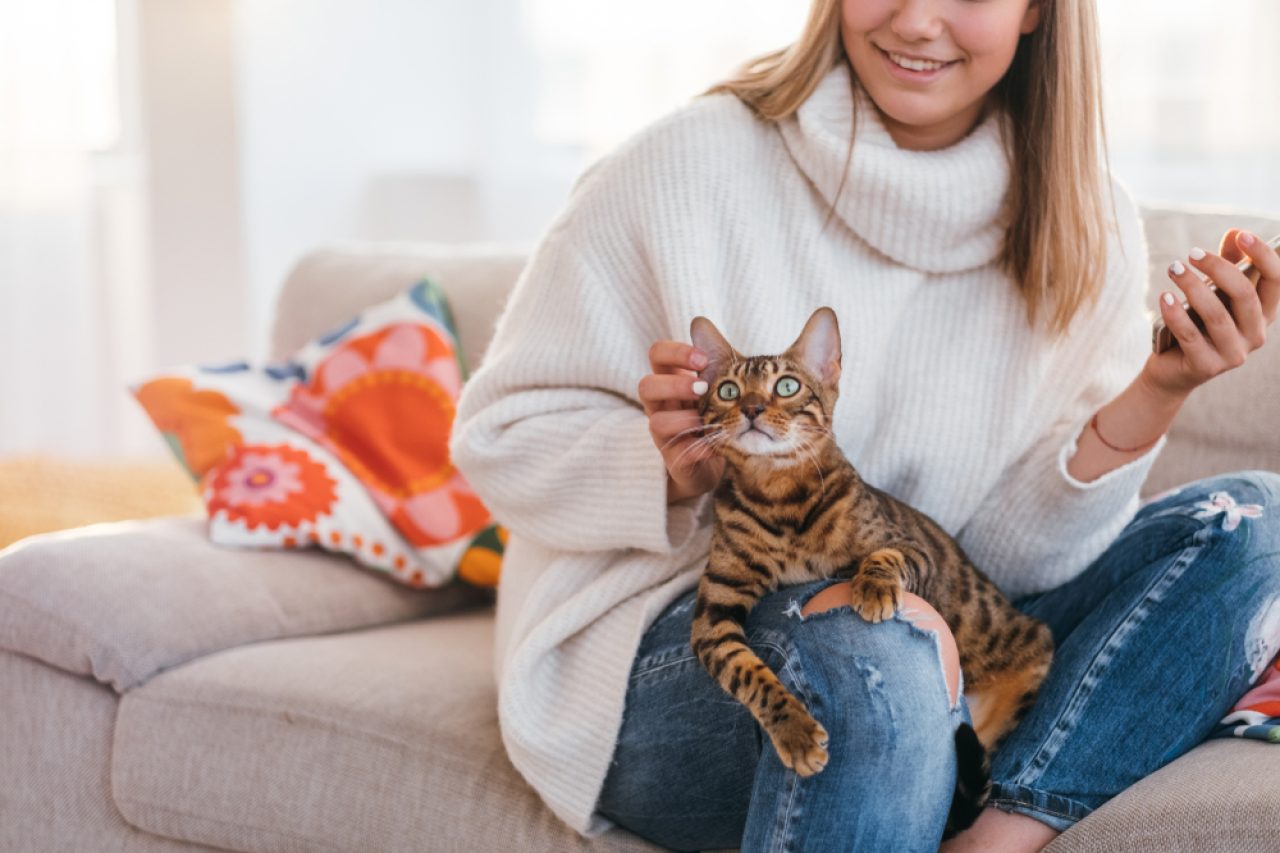📖 Table of Content:
“How can I get my hands on a Bengal? And how long do Bengal cats live?” Oh, have you ever caught yourself thinking how absolutely adorable leopards are?
With the boldest of patterns and the brightest of minds, they seem as though they would make for the purrfect pet – other than the struggle of fearing for your life, of course. How do you get that sense of wildness without the danger!?
Here’s the thing. The moment you thought to put National Geographic on as background sound while you were cleaning the apartment, you were doomed.
Come on, you noticed the beauty of the marbled coat and the perked-up ears from across the room and you were a total goner – head over heels for yet another wild thing.
But, what would you say knowing there’s a chance you could house a fluffer that resembles one of your wilderness obsessions? Oh, the first time you catch a glimpse of a Bengal cat roaming through your apartment, you won’t believe your eyes because “Why’s there a freakin’ ocelot munching on my living room sofa!?”
And, Bengals happen to have a history with the wilderness because they descended from Asian leopards!
As a matter of fact, when an Asian leopard gives birth to Asian leopard kittens, the kittens get assigned a symbol F1. And, each following generation of kittens gets assigned appropriate symbols F2, F3, and others. So, to be even considered domestic, a Bengal has to be at least an F4.
But, you’re safe. By the time they reach the appropriate symbol they have long abandoned their wild nature. Bengals are great, and we’re bringing you everything you need to know (together with the dreaded “how long do Bengal cats live” question) to help you make a decision.
Bengal cats 101: All you need to know about these frisky felines
Bengal cat life expectancy seems to be the same as that of other cats (Maine Coon, Siamese, or Ragdoll) – 12 to 18 years depending on various factors. And, with proper care and pampering, there’s no reason why a Bengal cat wouldn’t be able to reach her early twenties.
But, you shouldn’t brush over the factors we’ve mentioned because they pretty much determine everything you can expect from housing and parenting a Bengal.
Before we dive in, and before you dabble with the longevity question, you should read up on everything you need to know about these magnificent creatures.
What’s the history behind Bengal cats? What do Bengals look like (other than pocked-sized leopards, of course)? How long do Bengal cats live? We know you’re itching with questions about these beautiful beasts!
Don’t worry, we’re going to stop beating around the bushes and bring you the tea while it’s hot (watch out for your tongue, though)!
1. What’s the history behind Bengals?
We’ve mentioned how Bengal cats came to be as a cross between domesticated cats and Asian leopards, right? Not that you’ve wondered, but that whole ordeal took place around the 1800s. And, that seems early considering the fact we haven’t witnessed a true Bengal before the middle of the 20th century.
How come, you might wonder? Turns out that the first Bengal appeared around 1963 when a breeder and conservationist, Jean Mill, crossed a domestic cat with an Asian leopard. And, he managed to create a cat that was accepted by the CFA (the Cat Fanciers’ Association).
Remember that whole thing about how a kitten needs to have an appropriate symbol (F4 and higher) to be considered domesticated? That’s the reason domesticating a true Bengal took a long time.
But, once Jean managed to get the word out, Bengal cats became one of the most popular pocket-sized leopards out there.
And, who could blame them considering the eye-popping colors and the warm, affectionate purrsonalities they possess? Thank you, Jean Mill – that’s pretty much all we can say while we lock eyes with one of the most beautiful breeds in the world.
2. What do Bengals look like?
Oh, we’re hoping Bengal cats live a long life because look at those pawsitively delectable rosette markings! And, one of the most prominent reasons these frisky felines are topping the list of purrfect pets seems to be the beauty they possess. Who would’ve thought!?
So, what are the most noticeable markings of a Bengal’s appearance? First things first, these fluffers aren’t heavy – they typically weigh between 8 to 15 pounds. Oh, that’s interesting information for pet parents planning on babying and carrying their Bengals around the apartment, don’t you think?
Other than that, Bengals possess the softest, boldly patterned, short coat you wouldn’t even be able to get off the Dolce & Gabbana rack. They sport coats of different shades of lavender, silver, chocolate, brown, and sable. And, not to mention you only need to brush and groom the coat once a week.
Oh and, don’t even get me started on the fact that Bengals look like Victoria’s Secret Models with long limbs and muscular bodies, making any coat (little less one with rosette markings) appear exquisite. But what can you expect from such unpredictable fashion queens?
3. What to expect from a Bengal pet?
Would you believe that Bengals are some of the warmest, sweetest, and affectionate felines out there? We’re asking because most pet parents think that Bengals are these dangerous, wild-looking creatures that don’t like hanging out with humans, cuddling, or lounging with other cats.
But, that’s not the case. Bengal cats absolutely adore running after butterflies, playing hide-and-seek with little humans (children, duh), and teasing the family dog.
As a matter of fact, Bengals are clever, can be taught tricks, and can be taught to chat the day away with humans as much as they please. And, that makes them purrfect for families with lots of members.
Word of advice, though. Make sure to establish a relationship between your Bengal and other cats, dogs, or family members from a young age. While Bengals do appreciate hanging out with others, they don’t respond that great to changes when they’re older. Something to keep an eye out for, right?
4. How do you care for a Bengal?
So, you’re doing everything you can to help your Bengal cat live a long, happy life. But you shouldn’t overlook one of the paramount factors – the care you provide her. Most pet parents bank on the fact that they’re going to have to brush and groom the cat’s coat, provide her with food and water, and offer shelter.
Now, these factors are going to ensure your Bengal lives a happy and healthy life. But there’s something about proper mental stimulation that makes the biggest difference. And Bengals are closely related to leopards, which means we shouldn’t be surprised to learn they require a lot of physical activity and mental stimulation to thrive.
What do we mean by that?
First and foremost, provide your Bengal with plenty of toys that you can rotate every couple of weeks so that she doesn’t get bored with them. Make sure you keep her on her toes (or paw pads) with a wide range of experiences (walks, physical activities, and even activities outside of her comfort zone).
A great option for your Bengal cat is this Catit Design Senses Play Circuit. It’s challenging and entertaining and you can easily change its layout if you notice your feline getting bored by it.
Order it right now and enjoy watching your cat as she spends hours hypnotized by all the options this toy offers.
And, not to forget, Bengals absolutely adore water. While you don’t need to bathe them frequently, your Bengal might look forward to swimming in the pool, playing in the sprinklers, or growling at a body of water.
Don’t worry, her short coat shouldn’t take long to dry. Give her a tap with a towel and a run-through with a brush, and voilà!
5. A Bengal’s health
We know you want your Bengal cat to live as long as she pawsibly can – and we’re rooting for you! There are a few genetic diseases you might want to keep an eye out for.
While most Bengal breeders make sure to breed them without genetic health problems, three of the most common afflictions might find a way to wreak havoc and shorten a Bengal’s lifespan.
Firstly, older Bengals are susceptible to heart disease, which can cause the heart muscle to thicken and create blood clots. Secondly, Bengals often deal with an eye disease that causes deterioration of the retina, leading to blindness.
Then, Bengals are also prone to experiencing anesthetic allergies which becomes a problem when they’re scheduled for surgery. Other than that, Bengals have the same likelihood of contracting a disease as any other, regular cat.
How long do Bengal cats live? How can you help them live longer, happier, and healthier?
We’ve mentioned how Bengal cats typically live 12 to 18 years depending on certain factors (meaning they aren’t that different from other cats).
Now, when we’re talking about a cat’s life expectancy, we can’t overlook genetics, lifestyle, nutrition, environment, healthcare, sterilization, and affection. Trust me, these play the biggest part.
On the other hand, we can’t predict everything that might happen throughout a Bengal’s life. Health niggles, ambiguous accidents (even accidents that might happen to you), and other factors might affect the way your little leopard behaves and takes care of herself.
But, there are things you can do (and things you can keep an eye out for) to prolong her life and make sure she’s happy and healthy. Here’s what you need to know before setting your heart on a Bengal and crying your eyes out when you learn she doesn’t live as long as you do.
1. Genetics
So, you’re looking for ways to ensure your Bengal cat lives a long life. And, there’s probably nothing you wouldn’t do to make sure she has everything she needs. But, there are times when Bengals live a short life regardless of the environment, healthcare, and nutrition you provide for them – and genetics seem to be the biggest culprit.
Why blame everything on genetics? Genetics can affect the way your Bengal lives her life for two reasons. Firstly, your cat’s breeding history affects the diseases she might contract and the longevity of her life.
For example, purebred cats tend to have a shorter life expectancy because they possess fewer genetic blends. But, a Bengal is a cross between a domesticated cat and an Asian leopard cat, which means she possesses more variety. And, more variety means more years added to her life expectancy… kind of.
Secondly, genetics affect the different diseases a Bengal might be susceptible to throughout her life. As mentioned before, Bengals (regardless of the breeder) might have problems with heart disease, eye disease, and anesthetic allergies. But, these are the things you can’t really control.
2. Lifestyle
Clearly, lifestyle is one of the things that affect the way your Bengal lives her life.
Bengal cats are pretty active. They enjoy getting physical, chasing after creepy crawlies, and playing with humans (and animals, they don’t judge as long as you don’t judge). And, they need exercise and playtime more than other breeds.
When they don’t get enough of what they need, they might become depressed and sleep throughout the day. Or, they might become annoyed and destroy your apartment without a care. Or, they might even become obese and contract a bunch of health niggles because they haven’t had the chance to burn those calories.
Whatever the case might be, a sedentary lifestyle is bound to negatively affect your Bengal. But provide her with everything she needs and ensure the quality of her life and she might astound you with how gracefully she handles her age.
3. Nutrition
Come on, you can’t feed your Bengal cheese puffs and other cheesy treats and expect her to have a long life! Trust me, the only thing you can expect when you don’t stop her from scoffing down parmesan cheese seems to be a very, very stinky rush to the litter box! Remember, cats can’t have lactose!
Nutrition arguably plays the biggest part in your cat’s health. Cats are obligate carnivores. They need a bunch of meat, animal protein, and animal-sourced nutrients to survive and thrive. But, that’s not to say you need to provide your Bengal with fresh meat.
Whatever type of food you feed to your Bengal (dry, wet, raw), make sure you’re providing her with enough protein, fiber, healthy fats, and essential vitamins, minerals, and antioxidants. While the list might sound long, most commercially available cat foods and cat treats contain everything your cat needs.
4. Environment
Making sure your Bengal cat lives a long life means keeping an eye on her environment (and her living conditions) at all times. Maybe that means babyproofing the apartment, or watching every move she makes when she’s outside. Make sure you’re doing everything you can to keep her safe.
Bengal cats that spend a lot of time outdoors seem to have a shorter lifespan (10 to 15 years) because they’re at a higher risk of having something happen to them.
Fighting with cats, eating something poisonous, getting attacked by animals, getting hit by a car… We’re thinking of only a few things that could go wrong.
Obviously, Bengals that spend most of the day lounging around the house have a longer lifespan (12 to 18 years). But, the two of you can lead an adventurous lifestyle by walking around your backyard, playing fetch (Bengals can play fetch too) on the porch, or birdwatching with a leash.
5. Healthcare
Bengal cats live longer when they’re taken care of – there’s nothing surprising about that. But, a lot of pet parents don’t understand that taking care of a cat also includes regular check-ups, dental appointments, vaccinations, and other precautions to make sure everything’s fine.
For example, regular checkups with a veterinarian of choice ensure your Bengal doesn’t deal with health problems without proper care and medication. Oh and, not to mention the advantages of early discovery and treatment of diseases.
For instance, regular dental appointments ensure your Bengal doesn’t contract gingivitis or bad breath ( both of which affect the quality of life).
And, when we’re talking about vaccinations, we shouldn’t overlook that Bengals need vaccinations. Vaccines against cat flu (feline herpes virus and feline calicivirus), feline infectious enteritis, and feline leukemia virus are only a couple of them.
Regular checkups ensure your cat gets her vaccines on time, too.
6. Sterilization
“But, why would sterilization matter when my Bengal cat doesn’t mate with other cats!? What does sterilization have to do with how long my Bengal cat lives?”
That sounds like something most pet parents would utter the moment you suggest sterilization to them, but they’re wrong. Neutered or spayed Bengals aren’t likely to be aggressive, fight with other cats (or other animals), and storm off outside whenever they feel that mating urge.
Neutered or spayed Bengals have a longer life expectancy because they’re happier, healthier, and shy away from stress.
And, sterilized Bengals don’t have a marked decrease in risk of cancer. Males can’t get testicular cancer (obviously) and they’re unlikely to get prostate cancer. Females can’t get uterine and ovarian cancer and they’re unlikely to get breast cancer and pyometra. Doesn’t that sound great!?
7. Affection
Goes with saying, but provide your Bengal with plenty of affection, cuddles, and snuggles. Bengal cats (and any other cats) live longer when they’re taken care of, happy, and healthy. But they can’t communicate when something’s wrong, which means you’re responsible for knowing your cat inside-out.
What do we mean by that? Cats communicate with strange sounds, body language, and physical contact because they don’t speak your language (and you don’t speak cat language). And, when you spend a lot of time with your cat, you start picking up on those subtle cues communicating what’s going on.
Maybe she flicks her ears when she’s angry or experiencing discomfort. Maybe she rubs her teeth on you when she’s hungry or thirsty. Whatever the case might be, you’re more likely to understand what she’s communicating once you’ve spent a significant amount of time with her.
And, when you make sure you do everything we mentioned, you have nothing to worry about. You and your Bengal should live a happy and healthy life together – no questions asked.
